Studio Survivors, March 2016
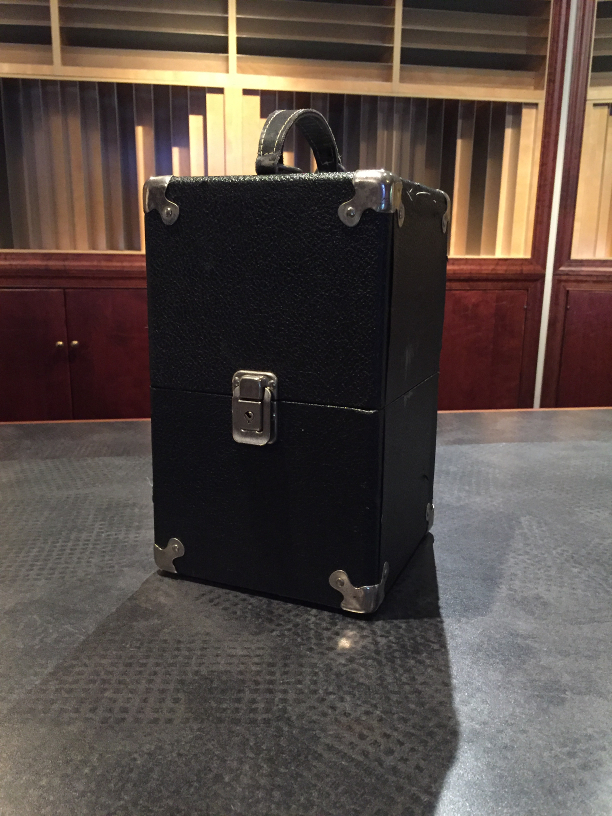
"Ooooo, Harold. What 'ave we 'ere?"
"Don't know, but it do look like a stout little package, don't it?"
"Shall we open it?"
"Yes, let's!"
"Whatzit? It turns into two!"
Gather around kiddies and you will hear a tale of a little monitor that could: What we have in the pic above is a relatively rare set of Auratone 5RC Super Road Cubes. Depending on your age and years of experience in recording, you may or may not recall the great little reference monitors called Auratones. In 1958 an intrepid fellow named Jack Wilson founded a little company in Chula Vista, CA, for the purpose of creating recording monitors. Dressed in faux walnut veneer, the tiny Auratone Model 5 Cube was born in 1960. It was a six-and-a-half inch, cube-form mixing reference monitor featuring a specially-designed, wide-range, five-inch driver. The speaker was designed to be a small reference that an engineer could take anywhere that would always sound the same. Their popularity grew to the point that by 1975, wherever you went in the recording world, you would likely find a pair of Auratones on top of the console at any respectable studio. To get a reliable mix on the fly all you needed was a pair of Auratones and a Crown DC-75 amp.
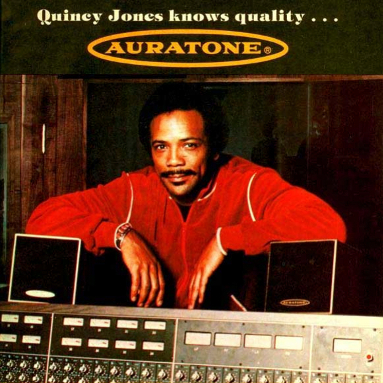
By 1980, the 5C Supercube was taking the field by storm. Console manufacturers were offering "turrets" to hold the Auratones on the top edge of their consoles. These little speakers had the unique advantage that they sported a single full-range driver, ensuring phase accuracy. If you set a measurement mic up right at the speaker cone and swept the speaker with tones you would get amazingly flat response from 60hz-18khz. We actually did that measurement at my facility for fun and verified that claim. If you could strap a headband on a pair and wear them like headphones you'd have very nice sounding headphones indeed. But these speakers were designed to be console-top, near-field units. At that distance they exhibit a gentle roll-off on both high and low-end response. Many people think the most important thing for a studio monitor to do is to sound great, but that isn't really true. The most important thing for a studio monitor to do is influence the production team to make great recordings and mixes. As a result, the most significant characteristic of these monitors was that they practically demanded that the team create an excellent, portable mix simply by virtue of their sound. Their smooth midrange nature just forced the mixer to prioritize his midrange information and keep it under control.

A classic late-1980s Auratone 5c Super Cube
that sits atop my console at work.
Another little-discussed characteristic of these monitors was that due to their flat response and gentle roll-offs they were extremely easy on the ears. The unglamorous side of recording is that sessions can go on for hours, sometime twelve to sixteen hours. After a long time monitoring on the big boys and fatiguing your ears, the Auratones offered an alternative that allowed you drop the volume and still know what was going on. I know that whenever I was thrown into a questionable or unfamiliar monitoring environment I made sure I was armed with a set of Auratones. I once mixed a ten-part TV series entirely on a pair of Auratones when I was assignd to an editing suite with questionable monitors. I'd occasionally pop up to the big speakers just long enough to verify that there wasn't anything untoward going on in the low-end and then I'd go back to the Auratones. Quincy Jones liked to mix on Auratones so much that in the '70s he invested in the company. By this time, Auratone was putting out five versions of the Supercube: The 5C Super Sound Cubes, the 5W Super Sound Wedges, the 5S Full Range Systems with larger volume boxes, 5PC Super Pro Cubes that were tolex-covered and fuse protected, and 5RC Super Road Cubes. The basic 5C version with lovely faux walnut veneer sold for a mere $85 per pair back around 1980 and the walnut was sure to fit the professional decor of the period.
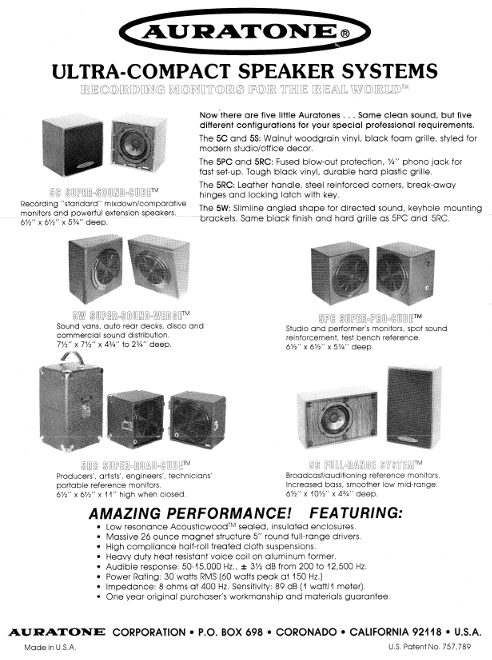
A period Auratone "cut sheet."
What brought us to this present article was a set of 5RC Super Road Cubes from around 1980. Created as a package that folded together like a book around take-apart hinges, this was a pair of road-toughened Super Cubes with some added features to beef them up: their 1/4" input jacks were front-panel mounted to protect them in transport and make it easy to ascertain that they were connected. The drivers were electronically protected by front-panel mounted fuses and physically protected by rigid grilles. The boxes were covered in black Tolex and featured corner hardware to protect them from bumps and bounces. A strap handle was added to one end for easy carrying. And when you linked the hinges the speakers could be closed and latched securely, hiding all the sensitive parts for travel. This particular set of speakers was brand new in 1981 when I accepted my first career job as a recording engineer. I and others on our crew took them on the road to various venues and control rooms to monitor recordings throughout two decades before they quietly found their way into storage.
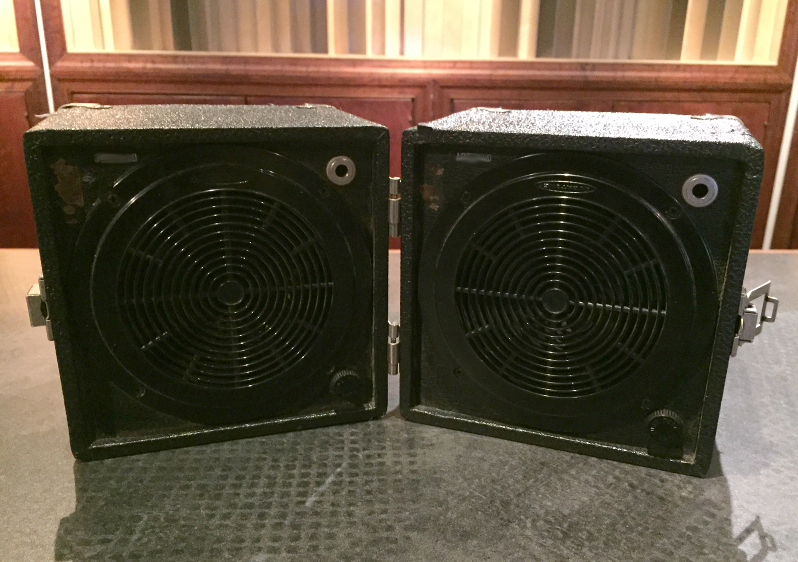
Eventually time and fashion passed by the Auratone line. Yes, fashion exists in the recording world, much as it does in the rest of the world. The fashion turned to louder and more brash near-field monitors such as the Yamaha NS-10m. What resulted were highly compressed, brash mixes. Eventually, with the death of Auratone founder Jack Wilson, the company ceased production right after the turn of the century. It looked very much as if Auratones might be relegated to the junk pile of time...
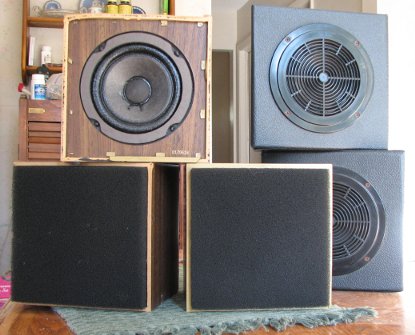
A nice pile of Auratones, all working
But over the ensuing decade things began to change. There was a gradual revival of interest in these tiny giants within the recording community. Engineers searching for pairs of vintage Auratones have pushed up the prices of the various vintage versions on eBay. I've seen 5Cs in excellent shape go for over $600 while pretty beat-up examples sell for $100 regularly. Eyeing the gap in the market and the resurgence of demand, another company with a strangely similar name and logo, Avantone, has created a similar speaker that seems to be built quite well. We purchased them for a couple of control rooms when we couldn't get Auratones, in fact. There is, however, a bit of controversy surrounding the Avantone Mix Cube speakers because they have a sharper treble, causing many engineers to prefer the original Auratones. That would explain the demand for them on eBay, no? But recently the family of the original owner of Auratone began painstakingly tooling up to recreate their famous bespoke drivers and reissue their speakers. At the end of last year production began again.
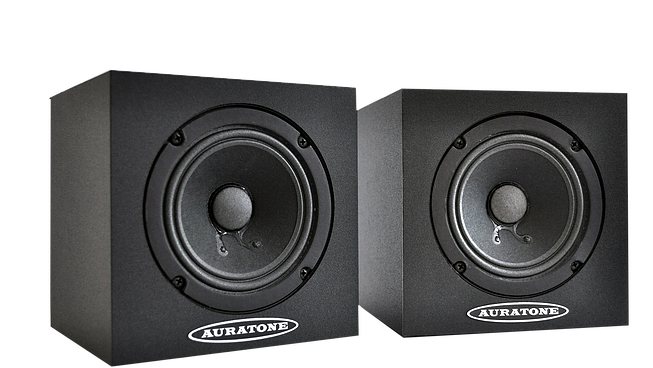
This month the reissue of the original 5C Supercube, now clad in black, was released. These new ones can be had for less than $400 at big-box retailers so once again, anyone can have a pair in his rig as reference monitors. I haven't heard the new ones yet, but let the "vintage vs. reissue" arguments begin!!!
And going back to the pair that started this whole article, though still in excellent condition, the set of Super Road Cubes from 1980 that I worked on were deacessioned and became available. After a cleanup and a little TLC to repair bruises and tack down lifting tolex they are ready to rock my remote work again. So in the end, the concept, the company, and even this example pair of Super Road Cube speakers, all end up qualifying as "studio survivors." And you know, come to think of it, after thirty-five years, I might just qualify as well.
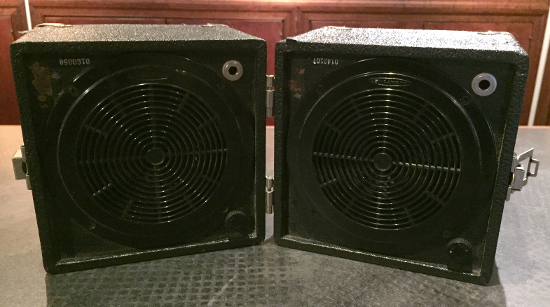
AURATONE Website
= =
=








